The Habit Of Gratitude And 100 Ways To Feel It
THE HABIT OF GRATITUDE AND 100 WAYS TO FEEL IT! (ISSUE 100)
By Diane Gold
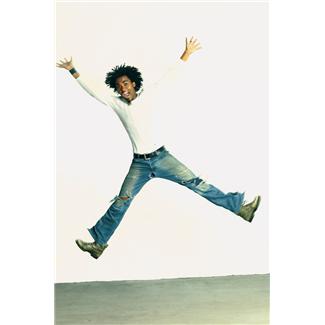 The habit of gratitude can be an acquired taste. Some of us naturally feel love and happiness with each positive occurrence. We also may have the temperance to quell the urge for revenge in negative events. Others of us train ourselves to jump-start the love through various means, even though we get angry. And then there are most of us who can develop this habit through the study of philosophy, through the inspiration of a teacher, the appreciation for a second chance or the lessons that experience brings.
The habit of gratitude can be an acquired taste. Some of us naturally feel love and happiness with each positive occurrence. We also may have the temperance to quell the urge for revenge in negative events. Others of us train ourselves to jump-start the love through various means, even though we get angry. And then there are most of us who can develop this habit through the study of philosophy, through the inspiration of a teacher, the appreciation for a second chance or the lessons that experience brings.
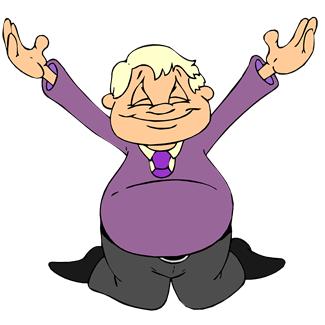 Whether it is innate from an early age or we work on its cultivation, isn’t is glorious to feel exuberant throughout the day from the power it gives? And for those of us who have no interest in gratitude; most of the time, it will show up when we least expect it, and we’ll wonder why we did not prioritize it.
Whether it is innate from an early age or we work on its cultivation, isn’t is glorious to feel exuberant throughout the day from the power it gives? And for those of us who have no interest in gratitude; most of the time, it will show up when we least expect it, and we’ll wonder why we did not prioritize it.
Because this is the 100th Issue of WarriorsOfWeight.com, our main essay will be a little different. We have compiled a list of things that are worthy of gratitude that might inspire the idea in others. Before that, we have our action steps, so that we can get our gratitude engines fired up before reading. They are entertaining to do and useful.
ACTION STEPS TO GRATITUDE CULTIVATION
1) Squeeze the fists tightly, but keep the neck relaxed.
This builds power in the hands as the fist fill with blood.
2) Raise the fists in the air with elbows slightly bent, and say,
“Woo hoo!”
3X.
What this does is starts to vibrate the chest cavity so that we get the chi moving.
3) Jump up and down 5X.
This gets the heart and blood going and prepares the body.
4) Say a gigantic, voluminous
“Yes.”
You know how we like social proof, where we believe because we see others acting on that belief? This affirmative sound psychologically prepares us for positive thanks.
5) Read the list below and imagine yourself in the context of what is listed.
NOTE
This step is to be completed after reading the list, if you can wait. Steps 1 through 5 prime you to experience gratitude from the read. Step 6 will pop out of you. Here it is.
6) Make a list of 3, 5, 10, 25, 50 or 100 items for which you are grateful. As you have new experiences, know that many go on the list.
![]()
THE LIST

1) What about the joys of having children? This refers to biological ones or children you take/took care of.
2) What about the joy of taking care of your elders? Not only is it giving them solace, but, if we’re looking, there’s a lot to learn.
The task is difficult, yet it means we have had elders we can call ours.
3) What about the joy of taking care of a kitten, cat, puppy or dog? Their friendship is worthy of the time we take to care for them.
4) What about getting a phone call from a friend at the very time you needed one? It’s great to have a friend, and they mean a lot.
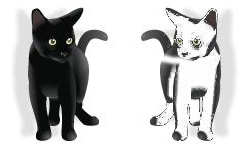 5) What about a friend’s offering the very thing you wished for without your having to ask? This happened to me when my close friend suggested my pets could stay with her while I traveled. If you’ve ever had a pet, you know how important it is to feel secure with the people who are taking care of them.
5) What about a friend’s offering the very thing you wished for without your having to ask? This happened to me when my close friend suggested my pets could stay with her while I traveled. If you’ve ever had a pet, you know how important it is to feel secure with the people who are taking care of them.
6) Did you ever have to go for a medical test that seemed like torture, and then it was over? That happened to me twice this week. Now, that’s gratitude.
7) How many of you have given birth? How about when the contractions are over and you’re finished? Of course, the birth is a magical experience, but the fact that the pain is over is pretty spectacular.
8) What about being at war and doing your duty and, subsequently, getting home safely? Others say that is huge, although I have not served in that way.
9) How about answering a question at school where everyone laughs at you? People point fingers for the rest of the day. And then you go into school the next day, and no one remembers the incident? That calls for gratitude.
10) What about when you start a new school in the middle of the year and don’t know anyone? And, for the first week, no one will sit with you? And then, someone invites you to sit together? That’s a good one, too.
11) What about if you become dizzy and can’t lift your head? It’s pretty horrible. And then it goes away? Since I spent a whole week feeling dizzy and nauseated a week ago, every day that I am not like that, I am consciously grateful.
I had a student who had chemotherapy and an MRI every two weeks. He used to share his gratitude that the chemo didn’t give him worse side effects. So, of course, it’s all about perspective. I was grateful he used the kung fu, tai chi and meditation I had taught him so that his MRIs were places to meditate during what is always very loud, unpleasant beeping, whirring, grinding metallic noise.
12) What about seeing your first lizard sunning on a rock on a normal day in the tropics? What a trip to see these animals in all shapes and sizes. Good to be part of it.
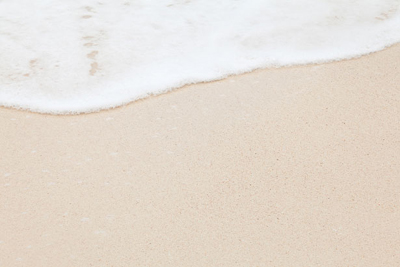 13) How about going to the beach and smelling that delicious salt smell? It is healing. wonderful and a big gift.
13) How about going to the beach and smelling that delicious salt smell? It is healing. wonderful and a big gift.
14) What about the first time you move your arms and legs in the water and they hold you up, meaning you are swimming? Not everyone gets this opportunity, so consider being grateful if you swim.
15) Here’s a good time to be grateful if you read. Yes, it is common, but it is a gift that not everyone has. A great way to show gratitude for this one is to teach one person to read.
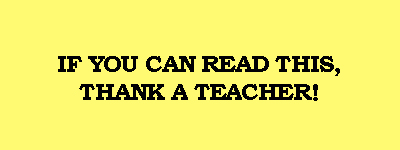 There used to be a sign in the NYC subway that said,
There used to be a sign in the NYC subway that said,
“If you can read this, thank a teacher.”
16) What if you live in the smallest house on the block? And then you move to an even smaller apartment? Many have no shelter, so it’s great to be grateful for what you have.
17) What if someone in your life passes away? Although the experience can be paralyzing, you are lucky to have known this person and have her bring her influence or love to you.
18) What about rectifying your differences with someone who passes away? I am so grateful for becoming best friends with my ex-husband before he passed. This was a gift.
19) Did you ever write a song? It’s amazingly cool. Having the creativity and drive to do it is great. If it has words and music, some write the words first. Others write the music first. Others write instrumentals. I am so grateful for the songs I have created.
If you’ve never done it and want to do it, write a poem first. If you need help with the music, you can ask us, and we will help.
20) Ever go skiing? Gliding down a hill of white weather is totally enjoyable? Or what about rolling in the snow? It’s the gift of weather. Don’t forget it on your list.
21) What about wanting to go out with someone and then that someone asks you out? This little occurrence is a gift, and gratitude is in order.
22) This could be considered silly, but no feelings are silly, so here it is: being able to print my documents on thick enough paper where the paper felt creamy and looked good. I know this luxury deserves gratitude.
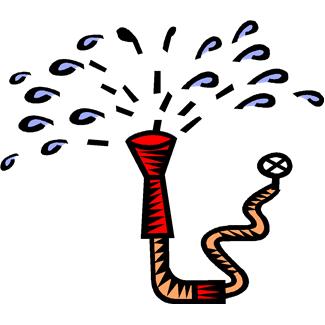 23) What about having running water? Now that I have an awareness of how many people go to the river or water location daily to get water for the house, I am super grateful. I also know that 783 million do not have access to clean water; many are bringing home contaminated water. I also know that, if we reduced our bottled water intake by 1/3, we could fund a project to fix the dirty water issue.
23) What about having running water? Now that I have an awareness of how many people go to the river or water location daily to get water for the house, I am super grateful. I also know that 783 million do not have access to clean water; many are bringing home contaminated water. I also know that, if we reduced our bottled water intake by 1/3, we could fund a project to fix the dirty water issue.
24) What about loving your toilet? It’s great that we have one. 2.5 billion of our world do not. I know it seems so far away to those of us who have always had one. But it is a big issue. Not having a toilet means lack of sanitation which means disease.
25) Being able to have wheatgrass juice in the morning is something for which I have gratitude. It is a gift that I can access it. I was also fortunate to receive a wheatgrass extractor from a friend. Big time gratitude.
26) Having pure organic vegetable juice is a big gift. You can feel the ingredients cleansing and nourishing like little workers inside the body. Gratitude for my juicer, twice as nice because it was given by a friend. gave me her juicer.
27) What about having a cellular phone? Very convenient, and the only option for some locations. Yes, everyone in certain locations has one, but think of it as a gift and conjure gratitude.
Did you know that more people have cell phones than toilets?
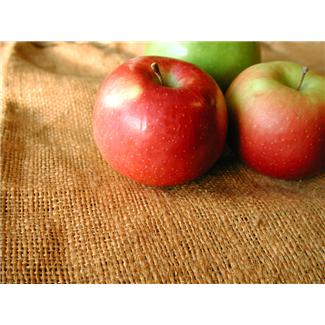 28) How about the way a food or drink calms the spirit from tension or anxiety? I’m remembering mouthwatering organic apple cider that hit the spot after one of those awful medical tests last week. It calmed my system but mostly my mind. It was like magic elixir to take away the psychological trauma from the sounds of a magnetic imaging machine.
28) How about the way a food or drink calms the spirit from tension or anxiety? I’m remembering mouthwatering organic apple cider that hit the spot after one of those awful medical tests last week. It calmed my system but mostly my mind. It was like magic elixir to take away the psychological trauma from the sounds of a magnetic imaging machine.
29) What about the delight of going to a movie, the theater, a concert you said yes to because your friend wanted to go turning out to be unbelievably great? That’s a gift.
30) What about being recognized for doing what you love to do, such as playing the piano, writing, lecturing, developing solutions for people? That’s the way to live. Be grateful for it.
NOTE
The next 70 ways to feel gratitude will be part of my list. Please comment should you recognize any or want to share yours.
31) My own orchid blooming.
32) My children’s first step and word.
33) My cats’ coming home after I let them out alone for the first time in a new location.
34) Having body pain go away.
 35) Not making too many mistakes when playing the piano recital.
35) Not making too many mistakes when playing the piano recital.
36) The thrill of playing a piano for the first time and all the cool times after that.
37) Being able to forgive myself for an action where I made a bad choice that I can’t change.
39) Being able to talk about the bad choices I have made with friends who accept me anyway.
40) Doing free dance and 5Rhythms dance.
41) Knowing how to do and teach tai chi.
42) Having changed people’s lives through my work.
43) Having eaten some delicious fresh organic fruits.
44) Loving the seeds I eat daily.
45) Being loyal to others.
46) Being so lucky as to have people in this world that I love and love me.
47) Seeing pygmy marmosets at the Bronx Zoo exhibit.
48) Experiencing Hawaii and our friends with my grown up kids.
49) Doing tai chi to dj music and dancing at Ultra Music Festival.
50) Having a strong body.
51) Having a balanced approach to life.
52) Having not worn glasses for the first 46 years.
53) Remembering phone numbers without looking.
54) Having had a rich experience coming of age in New York City.
55) Living 1/2 a block from the door to undergraduate and graduate university.
56) Having had a super musical and understanding principal at one of the schools where I taught who allowed me to buy turntables and teach mixing.
57) Having easy access to computer technology.
58) Understanding how to make a few kinds of websites and use basic html. (Yes, I’m grateful since I love code.)
59) Having experienced lots of desserts of many flavors.
60) Having done turntable mixing with vinyl records. Yippee!
61) Having a great relationship with my kids.
62) Having respect for my kids and getting respect from them.
 63) Living within 2 minutes of the ocean.
63) Living within 2 minutes of the ocean.
64) Being from New York.
65) Having had a strong and courageous mother.
66) Having had a loving father who taught me algebra, sports and small boat stuff.
67) Being proud to be my parents’ daughter.
68) Being happy to be gathering information on corporate customer service flaws.
69) Being thrilled to be compiling fitness books for different target markets.
70) Being thrilled to be offering one-minute exercises for habit change.
71) Being happy that someone invented an internet radio station based upon musical characteristics and that I can access it.
72) Being grateful that I can watch movies on a big screen, thanks to my kids. It really changes the perspective.
73) Having had piano lessons with Sanford and Norman.
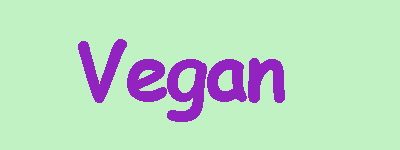 74) Having the locational and financial opportunity to be vegan.
74) Having the locational and financial opportunity to be vegan.
75) So grateful that I can minimize killing by being vegan.
76) Loving the food that I eat as a vegan.
77) Having listened to some of the greats in jazz every night during the 70s including Bill Evans, my hero, Herbie Hancock, Keith Jarrett & the band, Chick Corea & Return To Forever.
78) Having the doorman of my NYU owned apartment find my cat who fell off the 4th floor terrace, alive, with only a broken leg.
79) Having a cohesive family unit as a child.
80) Having a loving uncle, like a second father, who came to visit every Sunday.
81) Having a special toy closet that my grandfather kept for me. He used to go to second hand shops and get second hand toys and games, all of which were a thrill to me since I never knew what would be in there.
82) Eating raspberries and blackberries from my grandmother’s bushes.
83) Having experienced the love of all the pets I have been fortunate enough to have had.
84) Having the ability to walk, talk, see, taste, sing, smell, hear.
85) Having a continuing true connection to my late ex.
86) Being so fortunate as to watch my children become adults and be on their paths in life.
87) Grateful to love music.
88) Being able to work without equipment.
89) Happy to have given up package vegan food for freshly made food.
90) Having shells of all sizes and shapes that have added beauty to my life. Of course, it is important to see that no animal is living in a shell before it is moved.
91) Being able to enjoy 80 degree weather on a regular basis.
92) Having ice skated in the little pond next to my elementary school.
93) Having breathed out in the winter and seen my breath.
94) Having jogged in the winter to have icicles form on my eyelashes.
95) Having had the same chipmunk come up on the deck for one whole season.
96) Feeling positive about my accomplishments.
97) Having the skills to change habits successfully using a simple systematic approach.
98) Having the skills to teach others how to change habits successfully using a simple systematic approach.
99) Feeling grateful for the time I have had so far.
100) Waking up one more day.
CONCLUSION
We hope this list will inspire thoughts that will help develop a personal list for which to be grateful.
ACTION STEP
Every day is a good day to look to find one more thing to add to the list.
The best of love and health in life. We are pleased to celebrate this anniversary because of you.
SPECIAL ATTENTION BELOW TO GET YOUR ANNIVERSARY GIFT
![]()
OUR ANNIVERSARY GIFT TO YOU ~ OUR ANNIVERSARY GIFT TO YOU
Would you like to help others by telling your story? Write to us so we can let others know about you. All brave ones who do this will get an evaluation and a three-step personal action plan for your effort.
OUR ANNIVERSARY GIFT TO YOU ~ OUR ANNIVERSARY GIFT TO YOU
![]()
____________________________________________________________________
FEEDBACK
Please leave a comment and LIKE.
DIANE GOLD, AUTHOR
Diane Gold, Founder of Warriors of Weight, Turning Habits Into Health, is a mentor in tai chi, kung fu and meditation, a music, fitness and stress expert, dedicated mom, studying plant-based nutrition and habit change.
She believes in gratitude. She says,
“It is a skill like any other. Sometimes, it’s more natural than at other times. But, everyone can learn to cultivate gratitude.
“Be patient, make your list and be glad for one thing today. That’s a great start. When you awaken tomorrow, there’ll be one more thing for which to be glad.”

 We are often not aware of sickness habits or wellness habits. For the most part, when we’re sick, we are consumed with feeling sick. Hopefully, you can’t relate to this feeling, but most of us can and do. And when we are well, we are not thinking about sickness.
We are often not aware of sickness habits or wellness habits. For the most part, when we’re sick, we are consumed with feeling sick. Hopefully, you can’t relate to this feeling, but most of us can and do. And when we are well, we are not thinking about sickness. So far, the only times I have been sick have happened in the past couple of years since I turned 60. And both times, my “specialist” physicians could give me no definitive cause for what I was feeling. That did prompt me to pine for a non-fiction version of Dr. House, MD, the TV series diagnostician, extraordinaire and gave me a bit of anxiety. I even wrote an article about it which you can access at the end of this article.
So far, the only times I have been sick have happened in the past couple of years since I turned 60. And both times, my “specialist” physicians could give me no definitive cause for what I was feeling. That did prompt me to pine for a non-fiction version of Dr. House, MD, the TV series diagnostician, extraordinaire and gave me a bit of anxiety. I even wrote an article about it which you can access at the end of this article.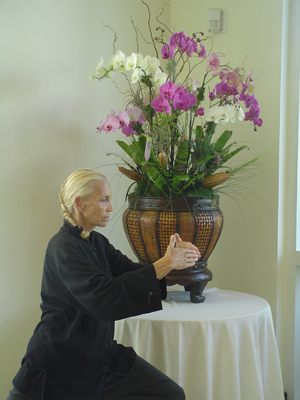 What I realized immediately was that the position of the proposed 48-hour position of the head was the suspended head position we teach in tai chi that brings stability to the region, allows the most oxygen to freely flow to the lungs, taxes the neck less than any other position and allows the most alertness and focus. It maintains tai chi principle by keeping the bones and body in proper alignment. It turns out it also helps to alleviate dizziness.
What I realized immediately was that the position of the proposed 48-hour position of the head was the suspended head position we teach in tai chi that brings stability to the region, allows the most oxygen to freely flow to the lungs, taxes the neck less than any other position and allows the most alertness and focus. It maintains tai chi principle by keeping the bones and body in proper alignment. It turns out it also helps to alleviate dizziness.
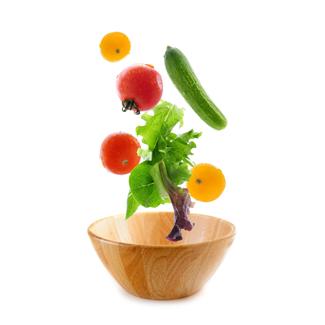 When we are sick, we may be nauseated, and we may not feel hungry. If we don’t eat, unfortunately, we will deplete our body nutrients.
When we are sick, we may be nauseated, and we may not feel hungry. If we don’t eat, unfortunately, we will deplete our body nutrients.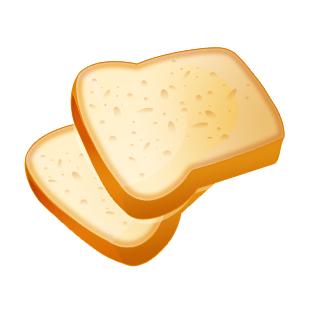
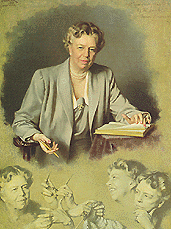 1)
1) 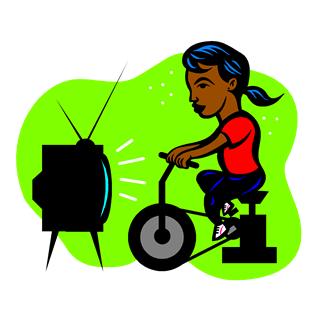 May we all have more healthy days than sick, and may we take responsibility for turning sickness into health.
May we all have more healthy days than sick, and may we take responsibility for turning sickness into health.
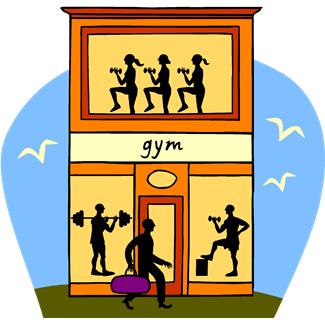 When thinking about social influence and habit change, I think of doing physical fitness like tai chi, going to the gym, going to a weight watch group, going to a rehab center. The function of each of these group activities is motivation of some kind. Let’s look at how the group motivates us.
When thinking about social influence and habit change, I think of doing physical fitness like tai chi, going to the gym, going to a weight watch group, going to a rehab center. The function of each of these group activities is motivation of some kind. Let’s look at how the group motivates us.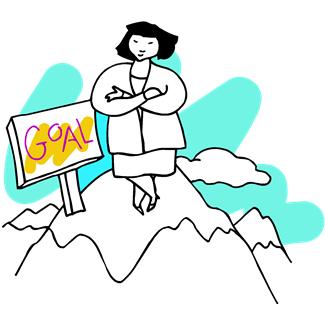 When we look at the amount of people who go back to their old habits after six months, a year, five years; it can be disheartening. There’s an interesting statistical article from 2004 about how treatment doesn’t work at:
When we look at the amount of people who go back to their old habits after six months, a year, five years; it can be disheartening. There’s an interesting statistical article from 2004 about how treatment doesn’t work at: People think tai chi is for exercise or defense, alone. It’s really for perception change. By doing a powerful exercise as tai chi is, we learn a systematic approach to movement. This system gives us tools to use in everyday life. As we acquire the patience to endure tremendous body exertion, we are learning a tool that works with anything in life. We have the understanding to know that the physical exertion and mental concentration needed to physically execute the movement is teaching us to follow through. And it is showing us we can do it.
People think tai chi is for exercise or defense, alone. It’s really for perception change. By doing a powerful exercise as tai chi is, we learn a systematic approach to movement. This system gives us tools to use in everyday life. As we acquire the patience to endure tremendous body exertion, we are learning a tool that works with anything in life. We have the understanding to know that the physical exertion and mental concentration needed to physically execute the movement is teaching us to follow through. And it is showing us we can do it. It’s the same if we surround ourselves with people who do not take drugs or drink or overeat or gamble. We will be more likely to accept behaving in a similar fashion, especially if they know we are working on habit change. If we keep repeating a new behavior in place of the old habit at the same time as building a personal foundation, we will succeed. And what’s missing at the start will no longer be missing. We will have developed, not only new behaviors, but a structure within ourselves that will sustain the way we wish to live.
It’s the same if we surround ourselves with people who do not take drugs or drink or overeat or gamble. We will be more likely to accept behaving in a similar fashion, especially if they know we are working on habit change. If we keep repeating a new behavior in place of the old habit at the same time as building a personal foundation, we will succeed. And what’s missing at the start will no longer be missing. We will have developed, not only new behaviors, but a structure within ourselves that will sustain the way we wish to live.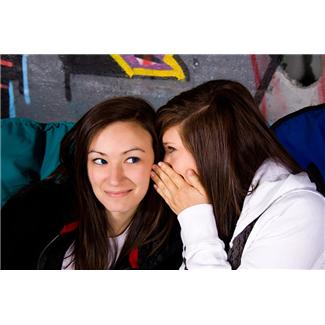 There is one secret to habit change. We don’t need to be college-educated to understand it. We don’t have to have been brought up in a wealthy home to use it. It is the same in every country. It applies to every habit. We all know the concept as it applies to daily life. Yet, it’s still a secret.
There is one secret to habit change. We don’t need to be college-educated to understand it. We don’t have to have been brought up in a wealthy home to use it. It is the same in every country. It applies to every habit. We all know the concept as it applies to daily life. Yet, it’s still a secret.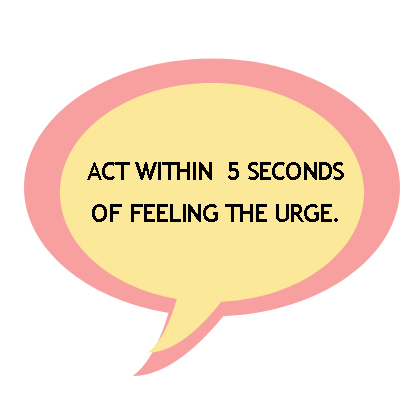 In order to hear it, we must be ready at this very moment to realize its truth; and that if we don’t make it a priority in our lives, we will go another way. Easiest is best, and that’s upon what this secret is based.
In order to hear it, we must be ready at this very moment to realize its truth; and that if we don’t make it a priority in our lives, we will go another way. Easiest is best, and that’s upon what this secret is based. Picture the situation where we get an urge to eat cake. We are on a strict regimen not to include cake in our food plan. If we don’t act with instant motion within five seconds of the urge, we have already given ourselves time enough to plan which way we will walk to the cake store, passing an Automatic Teller Machine along the way, since we keep no cash with us to avoid running out to buy food. Oops, we forgot about the ATM card. Or figuring out how to run up an account with the local grocer if we have no cash, if we have remembered not to have an ATM card around.
Picture the situation where we get an urge to eat cake. We are on a strict regimen not to include cake in our food plan. If we don’t act with instant motion within five seconds of the urge, we have already given ourselves time enough to plan which way we will walk to the cake store, passing an Automatic Teller Machine along the way, since we keep no cash with us to avoid running out to buy food. Oops, we forgot about the ATM card. Or figuring out how to run up an account with the local grocer if we have no cash, if we have remembered not to have an ATM card around.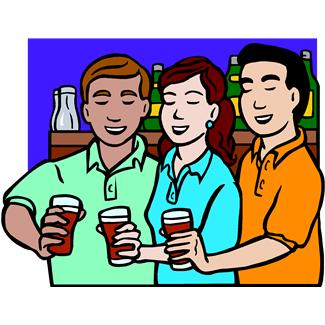 Imagine it’s the end of the work day, we are closing up our store and start getting the urge to join all our buddies across the street and drink alcohol. Yet, we know, at this time, we have decided to abstain from alcohol because it does not support us. So, when we feel that craving, we have a choice: we can act within 5 seconds and take a new action that does not involve alcohol OR wait and go drink alcohol, a behavior we already know is not working for us. If the people at the pub are really our buddies, we will see them later, not in the bar.
Imagine it’s the end of the work day, we are closing up our store and start getting the urge to join all our buddies across the street and drink alcohol. Yet, we know, at this time, we have decided to abstain from alcohol because it does not support us. So, when we feel that craving, we have a choice: we can act within 5 seconds and take a new action that does not involve alcohol OR wait and go drink alcohol, a behavior we already know is not working for us. If the people at the pub are really our buddies, we will see them later, not in the bar.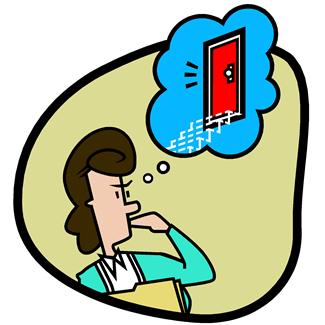 We have a very short window of opportunity in which to execute the one secret to habit change. It’s usually in that five second range that we must act. If we don’t take a new action within that time, we will habitually do our old behavior. And changing our habit will wait on the sidelines another day.
We have a very short window of opportunity in which to execute the one secret to habit change. It’s usually in that five second range that we must act. If we don’t take a new action within that time, we will habitually do our old behavior. And changing our habit will wait on the sidelines another day.
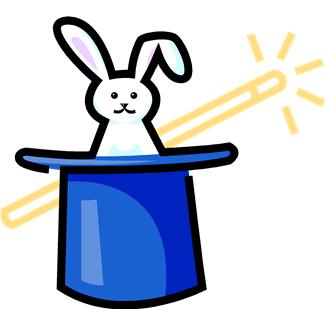 Do it. It is massively impactful, requires little activity, not much effort other than the effort of doing magic on or tricking one’s own mind. And it works on all the urges to a large degree.
Do it. It is massively impactful, requires little activity, not much effort other than the effort of doing magic on or tricking one’s own mind. And it works on all the urges to a large degree.
 When learning to change a habit, looking too far ahead is usually a deal breaker. If we are looking at the end result, meaning that we changed our habit; it may look vast, overwhelming, impossible, certainly difficult that it’s quitting time, quitting the process of change, that is.
When learning to change a habit, looking too far ahead is usually a deal breaker. If we are looking at the end result, meaning that we changed our habit; it may look vast, overwhelming, impossible, certainly difficult that it’s quitting time, quitting the process of change, that is.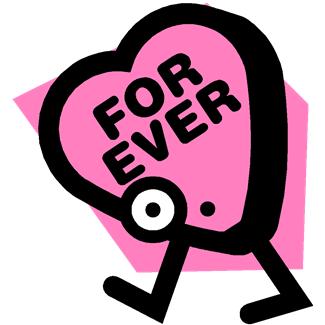 When we decide we will change a habit forever, we are locking ourselves in a prison. To give up an old behavior is not as difficult if we tell ourselves that we might be able to go back to it at some point in the future. It makes it easier to start, and it is not as scary a process. Change A Habit For Today, Not Forever
When we decide we will change a habit forever, we are locking ourselves in a prison. To give up an old behavior is not as difficult if we tell ourselves that we might be able to go back to it at some point in the future. It makes it easier to start, and it is not as scary a process. Change A Habit For Today, Not Forever How many times have we thought we had ourselves together, and we stopped behaving in the way that was working for us? We had changed our habit so long ago that we thought we could stop the technique that got us to change the habit?
How many times have we thought we had ourselves together, and we stopped behaving in the way that was working for us? We had changed our habit so long ago that we thought we could stop the technique that got us to change the habit?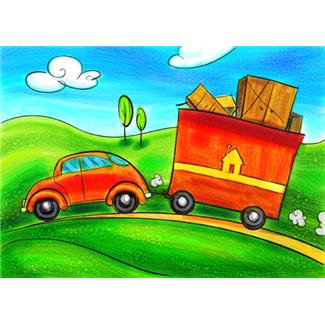
 Imagine a U.S. Senator whose family members all speak street language. She was the only member of the family to go to school. She was raised on “ain’t,” “anyways,” “nucular energy,” “athalete,” “asterik,” “supposubly,” “mischieveeous.” She goes to visit her original home for a week and her entire family speaks their normal street speak to her or with her. Then she comes back to D.C.
Imagine a U.S. Senator whose family members all speak street language. She was the only member of the family to go to school. She was raised on “ain’t,” “anyways,” “nucular energy,” “athalete,” “asterik,” “supposubly,” “mischieveeous.” She goes to visit her original home for a week and her entire family speaks their normal street speak to her or with her. Then she comes back to D.C. Once we have accomplished doing the new action and have a routine going that includes the new behavior, we can rejoice in the fact that we have begun to change the habit and that we had the power to start. If we forget to be joyful which includes acknowledging ourselves for changing, we are missing out on the joy that can sustain the new behavior.
Once we have accomplished doing the new action and have a routine going that includes the new behavior, we can rejoice in the fact that we have begun to change the habit and that we had the power to start. If we forget to be joyful which includes acknowledging ourselves for changing, we are missing out on the joy that can sustain the new behavior.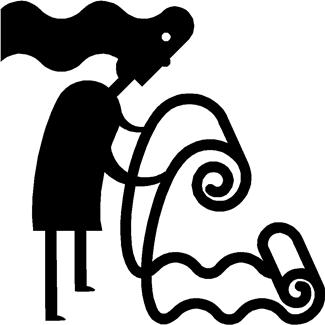
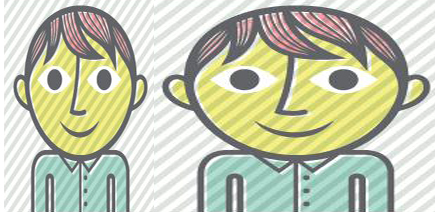 On September 5, a new study came out in the journal, Science, where germ-free mice were colonized with gut microbes (called “microbiota” in the study itself) from four pair of human twins. Each pair of twin donors contained one obese and one thin human. The recipients of the fecal matter were sterile mice who had no gut microbes until they were exposed to the human microbes.
On September 5, a new study came out in the journal, Science, where germ-free mice were colonized with gut microbes (called “microbiota” in the study itself) from four pair of human twins. Each pair of twin donors contained one obese and one thin human. The recipients of the fecal matter were sterile mice who had no gut microbes until they were exposed to the human microbes.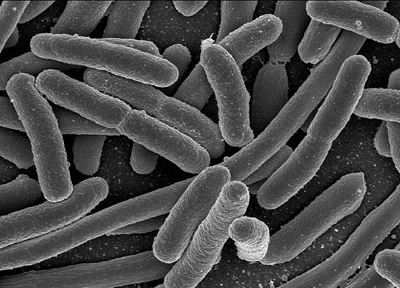
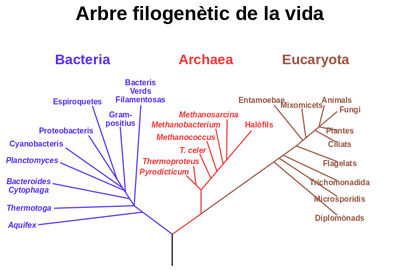
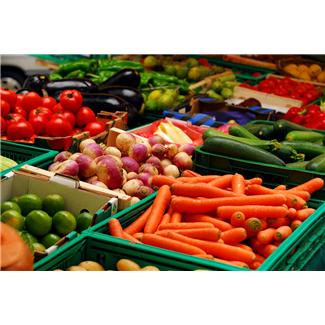

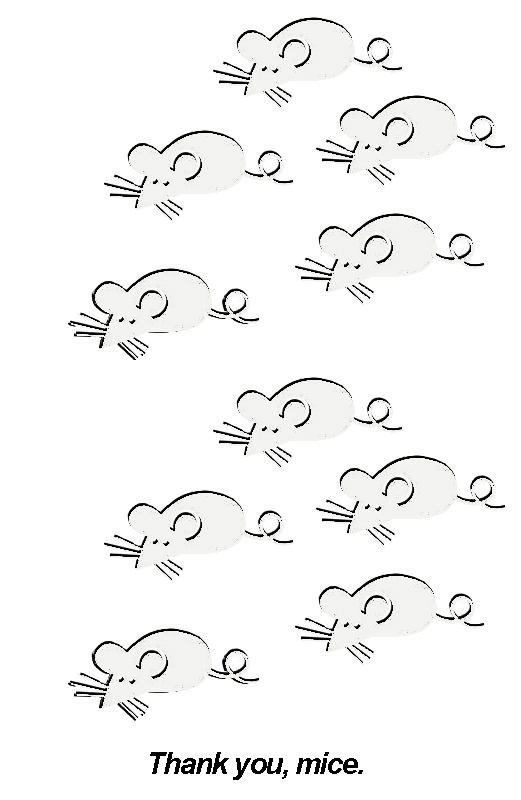
 “My research on forgiveness has led me to this unsettling conclusion: The desire for revenge isn’t a disease that afflicts a few unfortunate people; rather it’s a universal trait of human nature, crafted by natural selection, that exists today because it helped our ancestors adapt to their environment.
“My research on forgiveness has led me to this unsettling conclusion: The desire for revenge isn’t a disease that afflicts a few unfortunate people; rather it’s a universal trait of human nature, crafted by natural selection, that exists today because it helped our ancestors adapt to their environment. Since we, as humans, are social; we have developed a code of mores that define what is and is not acceptable reaction to various actions. We have laws that help regulate our actions, as well.
Since we, as humans, are social; we have developed a code of mores that define what is and is not acceptable reaction to various actions. We have laws that help regulate our actions, as well.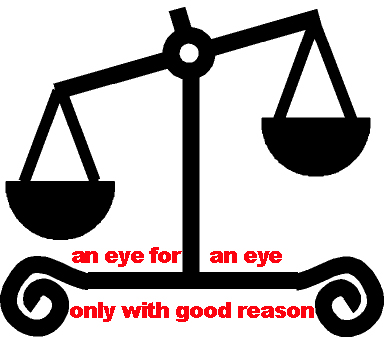
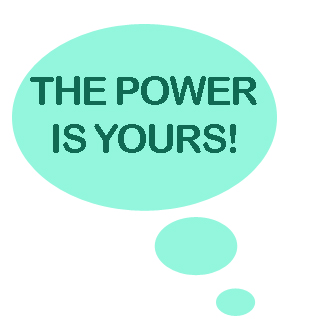
 “No! It’s in us for survival reasons. As humans with high thought process, we CAN realize when revenge is for survival and when it’s only for ego. We can temper ourselves. That’s why I equate forgiveness and revenge with any habit of substance, emotion, gambling or ice cream; it will always be there, but doesn’t always require an action.
“No! It’s in us for survival reasons. As humans with high thought process, we CAN realize when revenge is for survival and when it’s only for ego. We can temper ourselves. That’s why I equate forgiveness and revenge with any habit of substance, emotion, gambling or ice cream; it will always be there, but doesn’t always require an action. Whatever our path to happiness, it is what drives us, floats our boat and encourages us to behave the way we do. Sometimes, it can be judged as superficial ego stroking; other times, it is seen as deep, genuine and benevolent. Whatever it is for us, we might be interested to know that our genes, and not just the social networks, can tell the difference.
Whatever our path to happiness, it is what drives us, floats our boat and encourages us to behave the way we do. Sometimes, it can be judged as superficial ego stroking; other times, it is seen as deep, genuine and benevolent. Whatever it is for us, we might be interested to know that our genes, and not just the social networks, can tell the difference. The study included 80 subjects who took a verbal survey, had their blood drawn and data compiled. It turns out that the study clearly indicated different gene expression profiles for those people whose happiness had to do with a goal or higher purpose and those whose happiness was connected with superficial pleasures and instant, short-lived gratification. According to an article in The New York Times on the study findings, Gretchen Reynolds wrote,
The study included 80 subjects who took a verbal survey, had their blood drawn and data compiled. It turns out that the study clearly indicated different gene expression profiles for those people whose happiness had to do with a goal or higher purpose and those whose happiness was connected with superficial pleasures and instant, short-lived gratification. According to an article in The New York Times on the study findings, Gretchen Reynolds wrote,
 It would serve all of us if we used the concepts in this study wisely. Whether we decided to run a store to give free sandwiches to the poor or we decide to work on our own physical fitness so that we can be a better and healthier family member; we would ultimately achieve that deeper happiness because our genes would tell the right proteins to fire so we would live longer and more healthily.
It would serve all of us if we used the concepts in this study wisely. Whether we decided to run a store to give free sandwiches to the poor or we decide to work on our own physical fitness so that we can be a better and healthier family member; we would ultimately achieve that deeper happiness because our genes would tell the right proteins to fire so we would live longer and more healthily.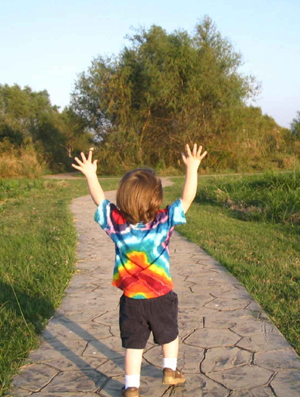
 There are so many ingredients in one product that the habit of reading labels must go along with doing research on what we read, if we wish to understand them. I have been studying labeling of foods since the mid-1970s when I began studying a philosophy that includes meditation (sound yoga) , a lacto-ovo-vegetarian diet and a good clean moral life. I read every label and contacted every manufacturer of anything I ate or drank, and I would pass that info on to my fellow philosophers. My purpose was to eliminate meat, fish, poultry from the diet. I was surprised at how many ingredients and processes were withheld from the consumer. Not enough has changed since then.
There are so many ingredients in one product that the habit of reading labels must go along with doing research on what we read, if we wish to understand them. I have been studying labeling of foods since the mid-1970s when I began studying a philosophy that includes meditation (sound yoga) , a lacto-ovo-vegetarian diet and a good clean moral life. I read every label and contacted every manufacturer of anything I ate or drank, and I would pass that info on to my fellow philosophers. My purpose was to eliminate meat, fish, poultry from the diet. I was surprised at how many ingredients and processes were withheld from the consumer. Not enough has changed since then. Example One: Take the alcohol in the common soy sauce, for example. It can be made from animal fat, plant substance or it can be man-made. If we choose to stay away from animal products, we won’t know whether there is animal in it by the ingredient name only. If we have an allergy to certain plants, we may not even know we are ingesting the allergic substance due to incomplete labeling practices. And, then there’s synthetic alcohol. That leaves the ingredient “alcohol” open to any number of methods of alcohol preparation.
Example One: Take the alcohol in the common soy sauce, for example. It can be made from animal fat, plant substance or it can be man-made. If we choose to stay away from animal products, we won’t know whether there is animal in it by the ingredient name only. If we have an allergy to certain plants, we may not even know we are ingesting the allergic substance due to incomplete labeling practices. And, then there’s synthetic alcohol. That leaves the ingredient “alcohol” open to any number of methods of alcohol preparation. Aside from the fact that we have been raised to buy food products in packages, the labels of those products don’t tell us the source, and the materials used in the manufacturing process are not required to be disclosed. We accept this and make it a standard in our buying habits.
Aside from the fact that we have been raised to buy food products in packages, the labels of those products don’t tell us the source, and the materials used in the manufacturing process are not required to be disclosed. We accept this and make it a standard in our buying habits.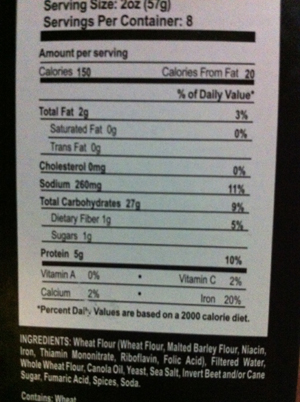 1)
1) 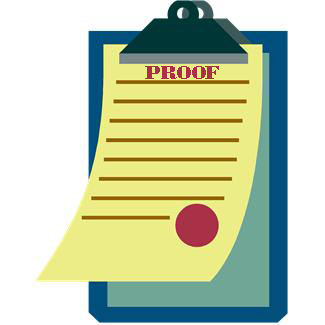 5)
5)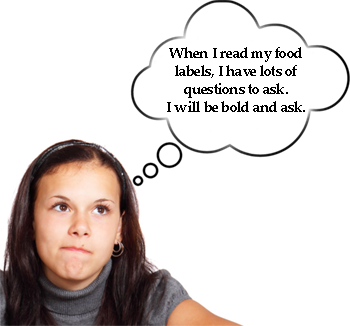 2)
2) 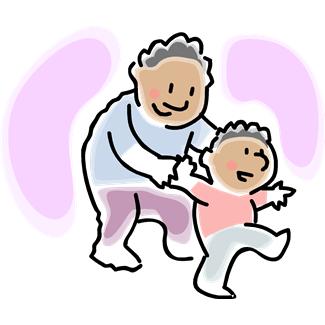 Both habits and mastery require many lessons. They are both learned behaviors that require extreme repetition. Habits are responses we cultivate as a reaction to a certain feeling, urge, itch, trigger, craving. With repetition, these responses become semi-automatic behaviors that become part of our infrastructure until we change them. Mastery is a state of prowess developed through repeating any skill set.
Both habits and mastery require many lessons. They are both learned behaviors that require extreme repetition. Habits are responses we cultivate as a reaction to a certain feeling, urge, itch, trigger, craving. With repetition, these responses become semi-automatic behaviors that become part of our infrastructure until we change them. Mastery is a state of prowess developed through repeating any skill set. When we get the same urge over and over and do the same behavior to answer the urge, isn’t that actually mastering the management of that urge? In some cases, this “management” supports our positive life style. In others, the habit burdens us or diminishes our effective productivity.
When we get the same urge over and over and do the same behavior to answer the urge, isn’t that actually mastering the management of that urge? In some cases, this “management” supports our positive life style. In others, the habit burdens us or diminishes our effective productivity.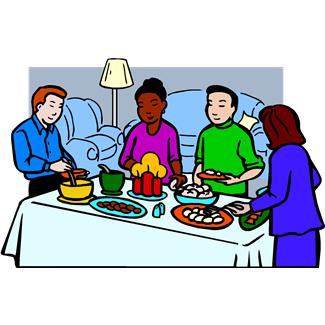
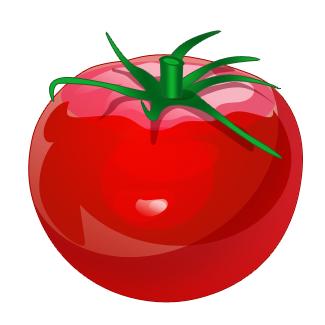
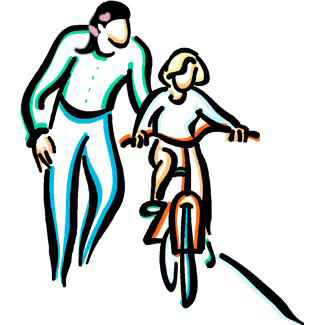 Whether we repeat our training, we learn, whether it’s riding a bike, learning to walk, learning to swim, answering our food urge mechanism by eating snack foods, answering our alcohol trigger by drinking to excess; we learn well how to immerse ourselves in the habit.
Whether we repeat our training, we learn, whether it’s riding a bike, learning to walk, learning to swim, answering our food urge mechanism by eating snack foods, answering our alcohol trigger by drinking to excess; we learn well how to immerse ourselves in the habit.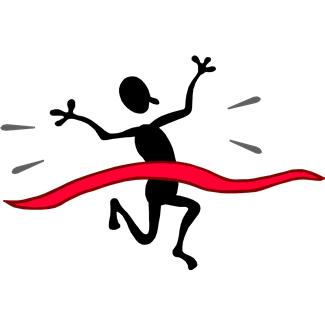 The skills used to develop a habit are focus, repetition and follow through. These are the skills needed to change a habit, too. Of course, passion is involved in the original learning and should one choose to make a change.
The skills used to develop a habit are focus, repetition and follow through. These are the skills needed to change a habit, too. Of course, passion is involved in the original learning and should one choose to make a change.





